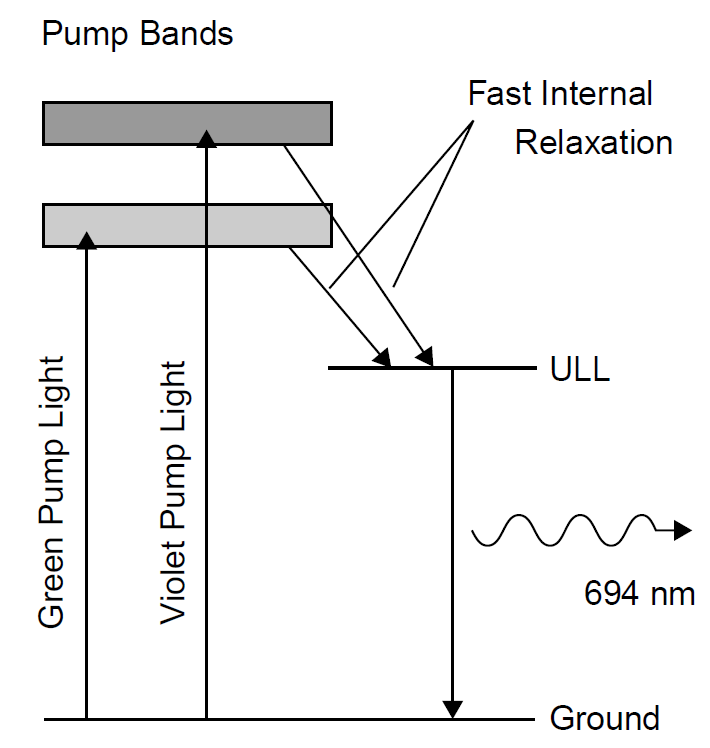
LASING MEDIUM (Ruby Lasers)
 المؤلف:
Mark Csele
المؤلف:
Mark Csele
 المصدر:
FUNDAMENTALS OF LIGHT SOURCES AND LASERS
المصدر:
FUNDAMENTALS OF LIGHT SOURCES AND LASERS
 الجزء والصفحة:
p296
الجزء والصفحة:
p296
 11-4-2016
11-4-2016
 1581
1581
LASING MEDIUM (Ruby Lasers)
Ruby is synthetically grown aluminum oxide (Al2O3) doped with chromium ions (Cr3+) at a concentration of around 0.05%. It appears light pink in color, with the chromium ions giving the characteristic color of the material. High purity is required, so crystal growth is a critical matter accomplished by only a few companies skilled in this area. Unlike the musings of several old science fiction movies in which a laser is built with natural gemstones, natural ruby (which has the same chemical composition) is unsuitable for use as a lasing material since it is not homogeneous enough and probably contains impurities that would inhibit lasing action.
The ruby laser is a three-level system and as such, exhibits high pumping thresholds. The dynamics of ruby are poor for lasing, but its broad absorption bands and relatively long upper lasing level lifetime allow ruby to operate in pulsed mode, in which inversion is achieved only temporarily. The energy levels of ruby are outlined in Figure 1.1. Broad absorption bands in the violet and green portions of the spectrum absorb light, usually from a xenon flash lamp, pumping chromium ions (Cr3+) to the pump levels. Pump levels have very short lifetimes (about 1 μs), and a fast decay occurs from those levels to the upper lasing level, which has a much longer lifetime, of 3 ms. From there, ions decay to ground state, emitting a photon of 694.3-nm light in the process. The long lifetime of the upper lasing level allows ruby to store energy in that level, making lasing possible (as a pulse) and allowing Q-switching of the laser to produce massive pulses.

Figure 1.1. Energy levels in ruby.
The lower lasing level is the ground state itself, but this isn’t one discrete level but a collection of closely spaced energy levels, normally all thermally populated. If these levels are depopulated by cooling the rod to, say, liquid-nitrogen temperatures (77 K) ruby can be made to operate as a four-level system, and hence CW laser action is possible, although a CW ruby laser is purely a laboratory curiosity, since other, more convenient and much more efficient CW laser sources (e.g., the YAG laser), exist.
 الاكثر قراءة في بعض تطبيقات الليزر
الاكثر قراءة في بعض تطبيقات الليزر
 اخر الاخبار
اخر الاخبار
اخبار العتبة العباسية المقدسة


